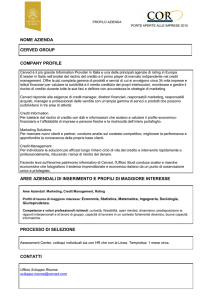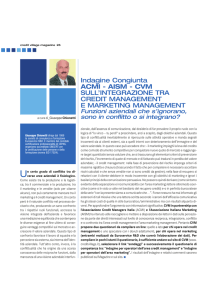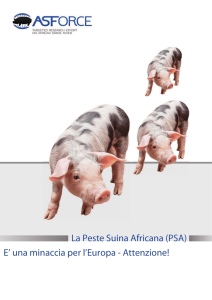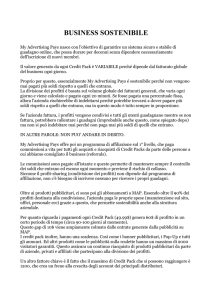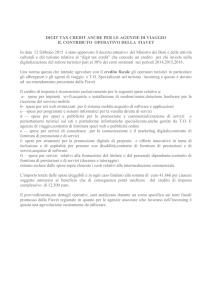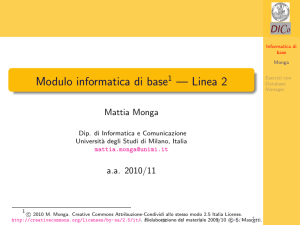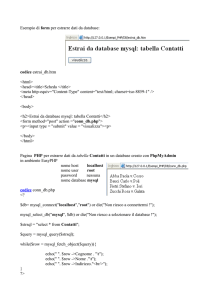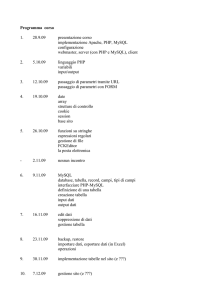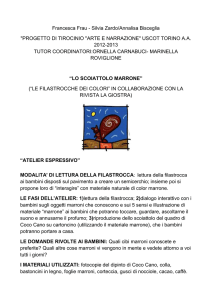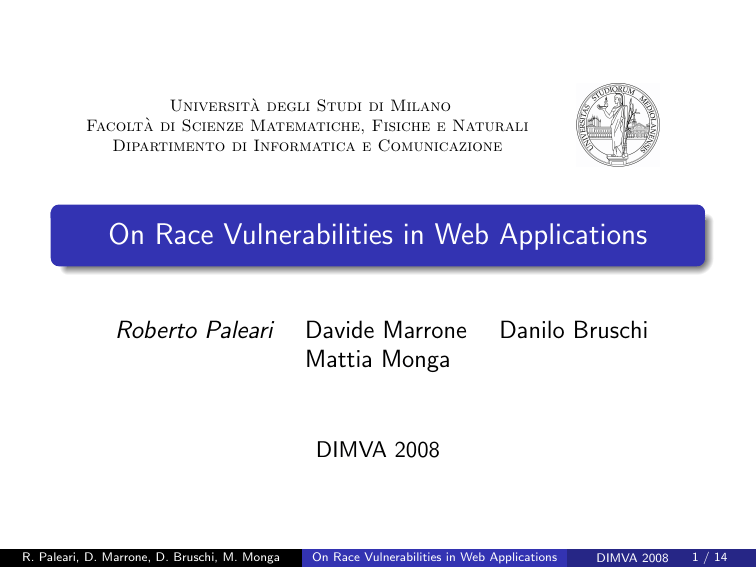
Università degli Studi di Milano
Facoltà di Scienze Matematiche, Fisiche e Naturali
Dipartimento di Informatica e Comunicazione
On Race Vulnerabilities in Web Applications
Roberto Paleari
Davide Marrone
Mattia Monga
Danilo Bruschi
DIMVA 2008
R. Paleari, D. Marrone, D. Bruschi, M. Monga
On Race Vulnerabilities in Web Applications
DIMVA 2008
1 / 14
Introduction
Web applications
many applications adopt the web paradigm: client-server
model + HTTP protocol
web servers are augmented with modules for the execution of
server-side code
Security issues
web applications are known to be subject to different attacks
(e.g., SQLI, XSS, command injection)
∼ 60% of software vulnerabilities are specific to web
applications
R. Paleari, D. Marrone, D. Bruschi, M. Monga
On Race Vulnerabilities in Web Applications
DIMVA 2008
2 / 14
Web application framework
Single request
web browser
page request
web server
spawn new worker
interpreter
script
DB
R. Paleari, D. Marrone, D. Bruschi, M. Monga
query
On Race Vulnerabilities in Web Applications
DIMVA 2008
3 / 14
Web application framework
Multiple parallel requests
web browser1
web browser2
page request
page request
web server
spawn new worker
spawn new worker
interpreter
interpreter
script
script
query
R. Paleari, D. Marrone, D. Bruschi, M. Monga
DB
query
On Race Vulnerabilities in Web Applications
DIMVA 2008
3 / 14
Web application framework
Multiple parallel requests
web browser1
web browser2
page request
page request
web server
spawn new worker
spawn new worker
interpreter
interpreter
script
script
concurrent DB access
query
R. Paleari, D. Marrone, D. Bruschi, M. Monga
DB
query
On Race Vulnerabilities in Web Applications
DIMVA 2008
3 / 14
Concurrency in web applications
web apps are made of different scripts that perform
well-defined, sequential tasks
scripts usually access some shared resources (e.g., a database)
multiple script instances can be executed concurrently
race conditions are well known, but their impact on web
applications has not been investigated
Problem
web programmers do not conceive their applications as
multi-threaded or multi-process entities
unexpected parallelism can lead to unforeseen interactions
parallelism can be controlled client-side
synchronization primitives are seldom used, and their efficacy
is often system-dependent
R. Paleari, D. Marrone, D. Bruschi, M. Monga
On Race Vulnerabilities in Web Applications
DIMVA 2008
4 / 14
Concurrency in web applications
web apps are made of different scripts that perform
well-defined, sequential tasks
scripts usually access some shared resources (e.g., a database)
multiple script instances can be executed concurrently
race conditions are well known, but their impact on web
applications has not been investigated
Problem
web programmers do not conceive their applications as
multi-threaded or multi-process entities
unexpected parallelism can lead to unforeseen interactions
parallelism can be controlled client-side
synchronization primitives are seldom used, and their efficacy
is often system-dependent
R. Paleari, D. Marrone, D. Bruschi, M. Monga
On Race Vulnerabilities in Web Applications
DIMVA 2008
4 / 14
Motivating example
1
2
3
4
5
6
$res = mysql_query("SELECT credit FROM Users WHERE id=$id");
$row = mysql_fetch_assoc($res);
if($row[’credit’] >= 800) {
<execute the requested operation>
$new_credit = $row[’credit’] - 800;
$res = mysql_query("UPDATE Users SET credit=$new_credit" .
"WHERE id=$id");
}
P1
Line
P2
Data
R. Paleari, D. Marrone, D. Bruschi, M. Monga
Line
Data
On Race Vulnerabilities in Web Applications
Database
ID
Credit
50
2500
92
820
123
1000
205
1200
...
...
DIMVA 2008
5 / 14
Motivating example
1
2
3
4
5
6
$res = mysql_query("SELECT credit FROM Users WHERE id=$id");
$row = mysql_fetch_assoc($res);
if($row[’credit’] >= 800) {
<execute the requested operation>
$new_credit = $row[’credit’] - 800;
$res = mysql_query("UPDATE Users SET credit=$new_credit" .
"WHERE id=$id");
}
P1
Line
2
Data
(id: 123, credit: 1000)
R. Paleari, D. Marrone, D. Bruschi, M. Monga
P2
Line
⊥
Data
⊥
On Race Vulnerabilities in Web Applications
Database
ID
Credit
50
2500
92
820
123
1000
205
1200
...
...
DIMVA 2008
5 / 14
Motivating example
1
2
3
4
5
6
$res = mysql_query("SELECT credit FROM Users WHERE id=$id");
$row = mysql_fetch_assoc($res);
if($row[’credit’] >= 800) {
<execute the requested operation>
$new_credit = $row[’credit’] - 800;
$res = mysql_query("UPDATE Users SET credit=$new_credit" .
"WHERE id=$id");
}
P1
Line
2
4
Data
(id: 123, credit: 1000)
(id: 123, credit: 1000)
R. Paleari, D. Marrone, D. Bruschi, M. Monga
P2
Line
⊥
1
Data
⊥
⊥
On Race Vulnerabilities in Web Applications
Database
ID
Credit
50
2500
92
820
123
1000
205
1200
...
...
DIMVA 2008
5 / 14
Motivating example
1
2
3
4
5
6
$res = mysql_query("SELECT credit FROM Users WHERE id=$id");
$row = mysql_fetch_assoc($res);
if($row[’credit’] >= 800) {
<execute the requested operation>
$new_credit = $row[’credit’] - 800;
$res = mysql_query("UPDATE Users SET credit=$new_credit" .
"WHERE id=$id");
}
P1
Line
2
4
4
Data
(id: 123, credit: 1000)
(id: 123, credit: 1000)
(id: 123, credit: 1000)
R. Paleari, D. Marrone, D. Bruschi, M. Monga
P2
Line
⊥
1
2
Data
⊥
⊥
(id: 123, credit: 1000)
On Race Vulnerabilities in Web Applications
Database
ID
Credit
50
2500
92
820
123
1000
205
1200
...
...
DIMVA 2008
5 / 14
Motivating example
1
2
3
4
5
6
$res = mysql_query("SELECT credit FROM Users WHERE id=$id");
$row = mysql_fetch_assoc($res);
if($row[’credit’] >= 800) {
<execute the requested operation>
$new_credit = $row[’credit’] - 800;
$res = mysql_query("UPDATE Users SET credit=$new_credit" .
"WHERE id=$id");
}
P1
Line
2
4
4
5
(id:
(id:
(id:
(id:
Data
123, credit:
123, credit:
123, credit:
123, credit:
P2
1000)
1000)
1000)
1000)
R. Paleari, D. Marrone, D. Bruschi, M. Monga
Line
⊥
1
2
4
Data
⊥
⊥
(id: 123, credit: 1000)
(id: 123, credit: 1000)
On Race Vulnerabilities in Web Applications
Database
ID
Credit
50
2500
92
820
123
1000
205
1200
...
...
DIMVA 2008
5 / 14
Motivating example
1
2
3
4
5
6
$res = mysql_query("SELECT credit FROM Users WHERE id=$id");
$row = mysql_fetch_assoc($res);
if($row[’credit’] >= 800) {
<execute the requested operation>
$new_credit = $row[’credit’] - 800;
$res = mysql_query("UPDATE Users SET credit=$new_credit" .
"WHERE id=$id");
}
P1
Line
2
4
4
5
(id:
(id:
(id:
(id:
Data
123, credit:
123, credit:
123, credit:
123, credit:
P2
1000)
1000)
1000)
1000)
R. Paleari, D. Marrone, D. Bruschi, M. Monga
Line
⊥
1
2
4
Data
⊥
⊥
(id: 123, credit: 1000)
(id: 123, credit: 1000)
On Race Vulnerabilities in Web Applications
Database
ID
Credit
50
2500
92
820
123
200
205
1200
...
...
DIMVA 2008
5 / 14
Motivating example
1
2
3
4
5
6
$res = mysql_query("SELECT credit FROM Users WHERE id=$id");
$row = mysql_fetch_assoc($res);
if($row[’credit’] >= 800) {
<execute the requested operation>
$new_credit = $row[’credit’] - 800;
$res = mysql_query("UPDATE Users SET credit=$new_credit" .
"WHERE id=$id");
}
P1
Line
2
4
4
5
(id:
(id:
(id:
(id:
Data
123, credit:
123, credit:
123, credit:
123, credit:
P2
1000)
1000)
1000)
1000)
R. Paleari, D. Marrone, D. Bruschi, M. Monga
Line
⊥
1
2
4
Data
⊥
⊥
(id: 123, credit: 1000)
(id: 123, credit: 1000)
On Race Vulnerabilities in Web Applications
Database
ID
Credit
50
2500
92
820
123
200
205
1200
...
...
DIMVA 2008
5 / 14
Race conditions in web applications
Case studies
tested several open-source apps
2 real-world closed-source SMSa applications, both found to
be vulnerable (. . . without having access to their source code!)
a
Text messages for mobile phones.
How to dynamically spot race conditions?
we focus on LAMP applications
interactions between multiple instances of the same script
limited to races on database accesses
R. Paleari, D. Marrone, D. Bruschi, M. Monga
On Race Vulnerabilities in Web Applications
DIMVA 2008
6 / 14
Race conditions in web applications
Case studies
tested several open-source apps
2 real-world closed-source SMSa applications, both found to
be vulnerable (. . . without having access to their source code!)
a
Text messages for mobile phones.
How to dynamically spot race conditions?
we focus on LAMP applications
interactions between multiple instances of the same script
limited to races on database accesses
R. Paleari, D. Marrone, D. Bruschi, M. Monga
On Race Vulnerabilities in Web Applications
DIMVA 2008
6 / 14
How to spot race conditions?
Framework overview
web application
off-line
analyzer
candidate races
query logger
heuristics
races
DB
R. Paleari, D. Marrone, D. Bruschi, M. Monga
On Race Vulnerabilities in Web Applications
DIMVA 2008
7 / 14
Off-line analysis
Candidate race conditions
Idea
monitor application’s SQL queries
interdependent queries could lead to race conditions
Off-line analysis algorithm
logged queries: Q = hq1 , q2 , . . . , qn i
∀q ∈ Q compute schema objects in use(q) and def(q)
candidate races are
(qi , qj ) ∈ Q 2 : i < j ∧ use(qi ) ∩ def(qj ) 6= ∅
A simple example:
Query1
SELECT id, credit
FROM Users
WHERE id = 123;
R. Paleari, D. Marrone, D. Bruschi, M. Monga
Query2
UPDATE Users
SET credit = 100
WHERE id = 123;
On Race Vulnerabilities in Web Applications
= used
= defined
DIMVA 2008
8 / 14
Off-line analysis
Heuristics: WHERE clauses
disjoint WHERE clauses can lead to false positives:
Query1
SELECT id
FROM Sessions
WHERE expiry time <= 123;
Query2
DELETE
FROM Sessions
WHERE expiry time > 123;
Solutions
dynamically query the DB for a conjunction of WHERE clauses
(→ efficient, but not sound)
constraint solver (→ sound, but expensive and does not
support all SQL constructs)
R. Paleari, D. Marrone, D. Bruschi, M. Monga
On Race Vulnerabilities in Web Applications
DIMVA 2008
9 / 14
Off-line analysis
More heuristics
Attribute-relation bindings
it is not always apparent to which relation an attribute
belongs (e.g., SELECT a1 , a2 FROM T1 , T2 )
⇒ actively query the application database
Annotations
synchronization attempts can lead to false positives
⇒ annotations to avoid reporting a race between a pair of
SQL queries
R. Paleari, D. Marrone, D. Bruschi, M. Monga
On Race Vulnerabilities in Web Applications
DIMVA 2008
10 / 14
Evaluation
Application
Joomla! 1.5RC4
phpBB 3.0.0
WordPress 2.3.2
Zen Cart 1.3.8a
Category
CMS
forum
blog/CMS
shopping cart
Queries
4086
2236
3638
35194
FP
0
0
0
0
TP
55 (2)
35 (4)
47 (4)
46 (1)
What kind of vulnerabilities did we find?
Highly application-dependent. Some examples:
bypass brute force checks
vote multiple times with parallel vote requests
circumvent anti-flooding features
R. Paleari, D. Marrone, D. Bruschi, M. Monga
On Race Vulnerabilities in Web Applications
DIMVA 2008
11 / 14
Limitations
Dynamic, database-level analysis
analysis is completely dynamic
we only take into account database queries
Lack of support for synchronization primitives
Why?
during evaluation, we found really few synchronization
attempts!
lack of a set of “standard” synchronization primitives
future work ;-)
R. Paleari, D. Marrone, D. Bruschi, M. Monga
On Race Vulnerabilities in Web Applications
DIMVA 2008
12 / 14
Conclusions
Contributions
study of the impact of race conditions on web applications
novel detection technique
working experimental prototype for LAMP applications
Future work
consider interactions between different scripts
employ program analysis techniques to extract more
information about the application’s logic
take into account synchronization primitives
R. Paleari, D. Marrone, D. Bruschi, M. Monga
On Race Vulnerabilities in Web Applications
DIMVA 2008
13 / 14
Thanks for the attention!
Questions?
R. Paleari, D. Marrone, D. Bruschi, M. Monga
On Race Vulnerabilities in Web Applications
DIMVA 2008
14 / 14

